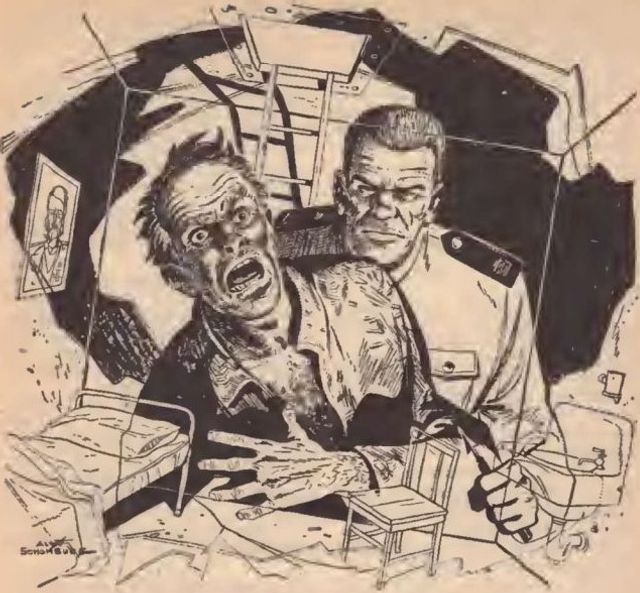-
Vijay Fafat
- Published on
A spy-prisoner with no recollection of most of his identity or history (due to a suppressant chemical) finds himself trapped in a room. Based on his subconscious scribblings on paper, he guesses that he must be a mathematician. There is an escape ladder in the room, but when he tries to climb out through the trapdoor, he finds himself back in the same room… The room evidently has a strange, higher-dimensional topology…
From this start, the story goes through psychedelic descriptions of a prisoner’s escape from the clutches of an implacable enemy which has trapped him in a “Moebius Room” and the only way to get out is to reverse engineer the equations governing its higher-dimensional spatial structure, and then using a make-shift drill to cut the structure open along specific lines to unravel it. The story must be read to be enjoyed. A few paragraphs may give a flavor:
“More and more isolated segments from his’ past bubbled up in his memory. For almost a moment, he had his name. That he was a mathematician he was certain. He recalled the symbols he had first written upon awakening and now they seemed to spell a message for him. He gritted his teeth in an effort at recall … they were … they were equations for simple two-dimensional manifolds. The term came readily to his tongue, but as yet it still lacked meaning. And now names came in a flood: Riemann, Moebius, Klein.”
[…]
“He was Dr. John C. Markum, former professor of mathematics at Oregon Institute of Technology, U. S. A. He taught seminar courses in abstract spaces, linear vector spaces, and abstract polynomials. He had been an ordnance captain in the War of 1958. Seven months ago, he had been recalled to the New Pentagon and transferred to Intelligence. Seven weeks ago, he had volunteered for a special mission in Europe.”
[…]
“A Moebius (room)—?”
“Of the highest order. Are you a scientist ?”[..] “Then, you know how a Moebius sheet, a rectangular strip of paper whose ends are joined after an 180-degree twist, forms a unilateral surface. Our topological technicians have succeeded in applying the mathematics of analysis situs to the construction of unilateral solids. This room, for example, has null connectivity to the outside universe so long as it remains in its present state of distortion. In other words, it has no outside surface. Every surface is an inside surface. No matter how often you try to leave this room, you only re-enter it.
[…]
The officer sighed: “You see. it is very much like your western ideological conception of hell. We meant it to be that way. It is well known that in hell, there is no exit.”
[…]
“He unscrewed the lighter, examined it carefully. The enemy still had a great deal to learn about one-sided surfaces. The case was a variant of a Klein bottle and contained in its hidden section several drams of the new jet fuel being manufactured in the Kara sector.”
[…]
“He scooped up the mathematical notes he had made and studied them. Apparently, his subconscious mind had been aware at the offset of the problem he faced; the symbols appeared to point to a solution. He tried to recall observations that had appeared in papers by Kerejarto and Lefschetz.
[…]
Finally, his equations were completed; but he looked at them with dread. There existed dire possibilities in following the course prescribed, many even predicating the probability of losing oneself in extra-dimensional spaces outside the known universe. But topologically, there was no other action to be taken. The equations told only what should be done—not what would be the result!”
In the end, the author has Markhum say, “Moebius… a great mathematician, founded the science of topology”. This is inaccurate. Topology, as a branch of mathematics, is generally recognized as having started with Euler. Augustus Moebius came much later, in late 1800s.
